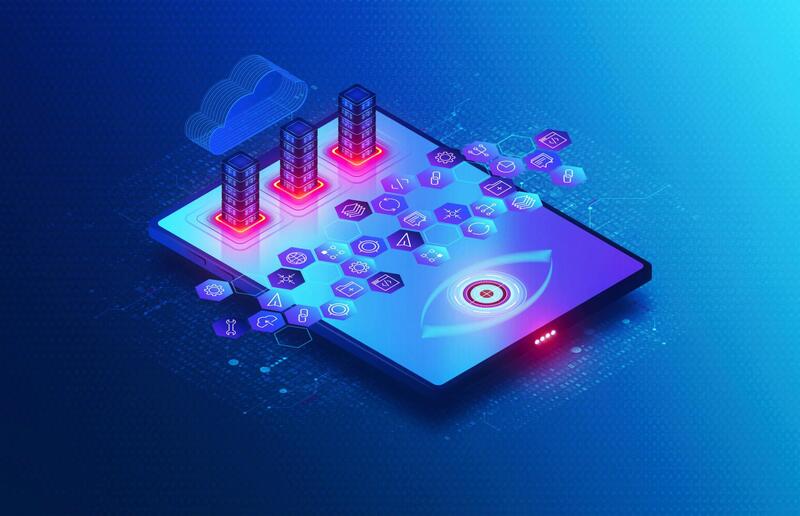Unlocking Scalability and Agility: The Power of Microservices Architecture
In the realm of software development, there's a constant quest for architectures that enable scalability, flexibility, and ease of maintenance. One such architectural paradigm that has gained immense popularity in recent years is Microservices Architecture. By breaking down complex systems into smaller, independently deployable services, Microservices offer a host of advantages along with some unique challenges.
Understanding Microservices Architecture
Microservices Architecture is an architectural style that structures an application as a collection of loosely coupled services. Each service is self-contained, runs its own process, and communicates with other services via well-defined APIs. Unlike monolithic architectures, where all functionality is bundled together into a single codebase, Microservices promote the decomposition of applications into smaller, more manageable components.
Let's delve deeper into understanding Microservices Architecture:
Principles of Microservices Architecture
Single Responsibility Principle (SRP):
Microservices adhere to the SRP by focusing on a single business capability or function. Each service is responsible for a specific aspect of the application's functionality, such as user authentication, payment processing, or inventory management.
Decentralization:
Microservices promote decentralization by allowing each service to operate independently. Decisions regarding technology stack, database choices, and deployment strategies are made at the service level, rather than being dictated by a central authority.
Domain-Driven Design (DDD):
DDD principles are often applied in Microservices Architecture to define service boundaries based on business domains. This ensures that each service is aligned with a specific area of the business, facilitating better understanding and management of the system.
Service Autonomy:
Microservices are autonomous entities that can be developed, deployed, and scaled independently. This autonomy allows teams to make decisions quickly and respond to changing requirements without being hindered by dependencies on other services.
API-First Approach:
Microservices communicate with each other via well-defined APIs. Adopting an API-first approach ensures that API contracts are established upfront, enabling loose coupling between services and facilitating interoperability.
Resilience and Fault Tolerance:
Microservices are designed to be resilient in the face of failures. Each service is responsible for handling its own errors and failures, implementing mechanisms such as retries, circuit breakers, and fallbacks to maintain system stability.

Components of Microservices Architecture
Services:
Services are the building blocks of Microservices Architecture. Each service encapsulates a specific business capability and exposes a set of APIs for interaction with other services.
API Gateway:
The API Gateway acts as a single entry point for clients to access the various services in the system. It provides routing, authentication, and other cross-cutting concerns such as rate limiting and logging.
Service Discovery:
Service Discovery is a vital component in Microservices Architecture, allowing services to locate and communicate with each other dynamically. Technologies like service registries and DNS-based discovery are commonly used for this purpose.
Message Brokers:
Message brokers facilitate asynchronous communication between services by decoupling producers and consumers of messages. They enable event-driven architectures and support patterns like publish-subscribe and message queues.
Containerization and Orchestration:
Containerization technologies like Docker and container orchestration platforms like Kubernetes play a crucial role in Microservices Architecture. They provide a standardized way to package, deploy, and manage Microservices at scale.
Monitoring and Observability:
Monitoring and observability tools are essential for gaining insights into the health and performance of Microservices-based systems. Metrics, logging, and distributed tracing help identify issues and optimize system behavior.
Challenges in Microservices Architecture
Service Communication:
Inter-service communication introduces complexity, latency, and potential points of failure. Choosing the right communication protocols and patterns is critical for ensuring reliability and performance.
Data Management:
Managing data consistency and integrity across multiple services can be challenging. Strategies like event sourcing, CQRS (Command Query Responsibility Segregation), and distributed transactions are employed to address these challenges.

Deployment and Operations:
Deploying and operating a large number of Microservices requires robust automation, monitoring, and management practices. Continuous integration, continuous deployment (CI/CD), and infrastructure as code (IaC) are essential for streamlining operations.
Testing:
Testing in Microservices Architecture requires comprehensive strategies that cover unit testing, integration testing, contract testing, and end-to-end testing. Mocking, stubbing, and consumer-driven contract testing tools help ensure the reliability of service interactions.
Organizational Alignment:
Adopting Microservices often requires organizational changes to align teams, processes, and incentives with the new architectural paradigm. Establishing cross-functional teams, fostering a culture of collaboration, and incentivizing autonomy are essential for success.
Advantages of Microservices Architecture
The advantages of Microservices Architecture are numerous and significant, making it a compelling choice for modern software development. Here's a detailed elaboration on the advantages:
1. Scalability
Microservices Architecture offers unparalleled scalability compared to traditional monolithic architectures. With microservices, individual components of an application can be scaled independently based on demand. This means that resources can be allocated precisely where needed, resulting in optimized resource utilization and cost-effectiveness. Whether it's scaling horizontally by adding more instances of a service or vertically by increasing the resources allocated to a specific service, Microservices Architecture provides the flexibility to scale components independently, ensuring that the application can handle varying workloads efficiently.
2. Flexibility and Agility
One of the most significant advantages of Microservices Architecture is its ability to enable agility in software development. Since each microservice is a separate entity with its own codebase, data storage, and business logic, development teams can work on them independently. This allows for faster development cycles, as teams can deploy changes to individual services without impacting the entire application. Additionally, microservices allow for the use of different technologies and programming languages for different services, enabling teams to choose the best tools for the job and innovate more rapidly.
3. Fault Isolation
In a monolithic architecture, a failure in one component can bring down the entire application. Microservices Architecture mitigates this risk by isolating failures to individual services. If a service fails, it does not necessarily impact the rest of the application. Moreover, since services are loosely coupled, failures in one service can be handled independently without affecting the overall system. This fault isolation improves the resilience of the application, enhances fault tolerance, and reduces the likelihood of catastrophic system failures.
4. Continuous Deployment and DevOps
Microservices Architecture aligns well with DevOps practices, facilitating continuous integration, continuous deployment, and rapid iteration. Since each service can be deployed independently, teams can release updates and new features more frequently without disrupting the entire application. This enables organizations to respond to customer feedback faster, deliver value to users more quickly, and stay ahead of the competition. Additionally, the modular nature of microservices simplifies the implementation of automated deployment pipelines, allowing teams to automate testing, deployment, and monitoring processes, leading to greater efficiency and reliability.
5. Improved Resilience
Microservices Architecture inherently promotes resilience by design. Since services are decoupled and isolated from each other, failures in one service do not propagate to others, minimizing the impact on the overall system. Furthermore, microservices allow for the implementation of redundancy and failover mechanisms at the service level, ensuring that the application remains available and responsive even in the face of failures. By distributing the application's functionality across multiple services, Microservices Architecture enhances fault tolerance and improves overall system reliability.
6. Technology Diversity
Microservices Architecture empowers organizations to embrace technology diversity by allowing teams to choose the most appropriate technologies and frameworks for individual services. Since services are independent and communicate via well-defined APIs, they can be implemented using different programming languages, databases, and libraries. This flexibility enables teams to select the best tools for each service based on its specific requirements, expertise, and constraints. By leveraging technology diversity, organizations can take advantage of the latest innovations, avoid vendor lock-in, and future-proof their applications.

Disadvantages of Microservices Architecture
While Microservices Architecture offers numerous advantages, it also comes with its own set of challenges and disadvantages. Here's a detailed elaboration on the disadvantages:
1. Complexity
Microservices Architecture introduces complexity at various levels of the software development lifecycle. Managing a large number of services, each with its own codebase, data storage, and deployment pipeline, can be daunting. Coordinating the interactions between services, implementing service discovery, managing distributed transactions, and ensuring data consistency adds to the complexity. Additionally, the need for specialized infrastructure, monitoring, and tooling further complicates the development and operation of microservices-based systems.
2. Operational Overhead
Operating a microservices-based system requires robust infrastructure and operational practices. Managing container orchestration platforms, service discovery mechanisms, and distributed databases adds to the operational overhead. Deploying, monitoring, and troubleshooting a large number of services can be challenging, requiring advanced automation, monitoring, and management tools. Moreover, ensuring consistency and compliance across services, handling security concerns, and managing service dependencies increases the complexity and operational burden.
3. Increased Latency
Inter-service communication over the network can introduce latency compared to in-process communication in monolithic architectures. Services communicate with each other via APIs, which may incur network overhead, serialization/deserialization costs, and latency. As the number of services grows, the complexity of service interactions increases, potentially leading to higher latency and reduced system performance. Additionally, network failures, congestion, and timeouts can further exacerbate latency issues, impacting the overall user experience.
4. Data Management Complexity
Managing data in a microservices-based system can be complex and challenging. Each service may have its own database, leading to data duplication and inconsistency. Maintaining data consistency and ensuring transactions across multiple services require careful coordination and synchronization mechanisms. Implementing distributed transactions, eventual consistency, and data replication strategies adds to the data management complexity. Moreover, handling data partitioning, sharding, and migration becomes more challenging in a distributed environment, increasing the risk of data loss or corruption.
5. Testing Complexity
Testing a microservices-based system presents unique challenges compared to monolithic architectures. With a large number of services and dependencies, testing each service in isolation as well as testing interactions between services becomes complex. Implementing comprehensive testing strategies, including unit testing, integration testing, contract testing, and end-to-end testing, is essential to ensure the reliability and stability of the system. Moreover, mocking, stubbing, and simulating service dependencies for testing purposes adds overhead and complexity to the testing process.
6. Team Coordination and Communication
Developing and maintaining a microservices-based system requires strong coordination and communication among development teams. Since each service is developed, deployed, and operated independently, teams need to align on APIs, service contracts, and deployment schedules. Ensuring consistency and compatibility between services, handling versioning and backward compatibility issues, and resolving cross-cutting concerns require effective collaboration and communication across teams. Moreover, managing dependencies and orchestrating service interactions in a distributed environment adds to the coordination overhead.
Conclusion
Microservices Architecture offers a powerful approach to building scalable, flexible, and resilient software systems. By decomposing applications into smaller, independently deployable services, organizations can achieve greater agility and innovation. However, adopting Microservices comes with its own set of challenges, including increased complexity, operational overhead, and testing complexities. Success with Microservices requires careful planning, strong technical capabilities, and a culture of collaboration and continuous improvement. Ultimately, the benefits of Microservices outweigh the challenges for organizations seeking to embrace the future of software architecture.
Newsletter to recieve
our latest company updates
Comment